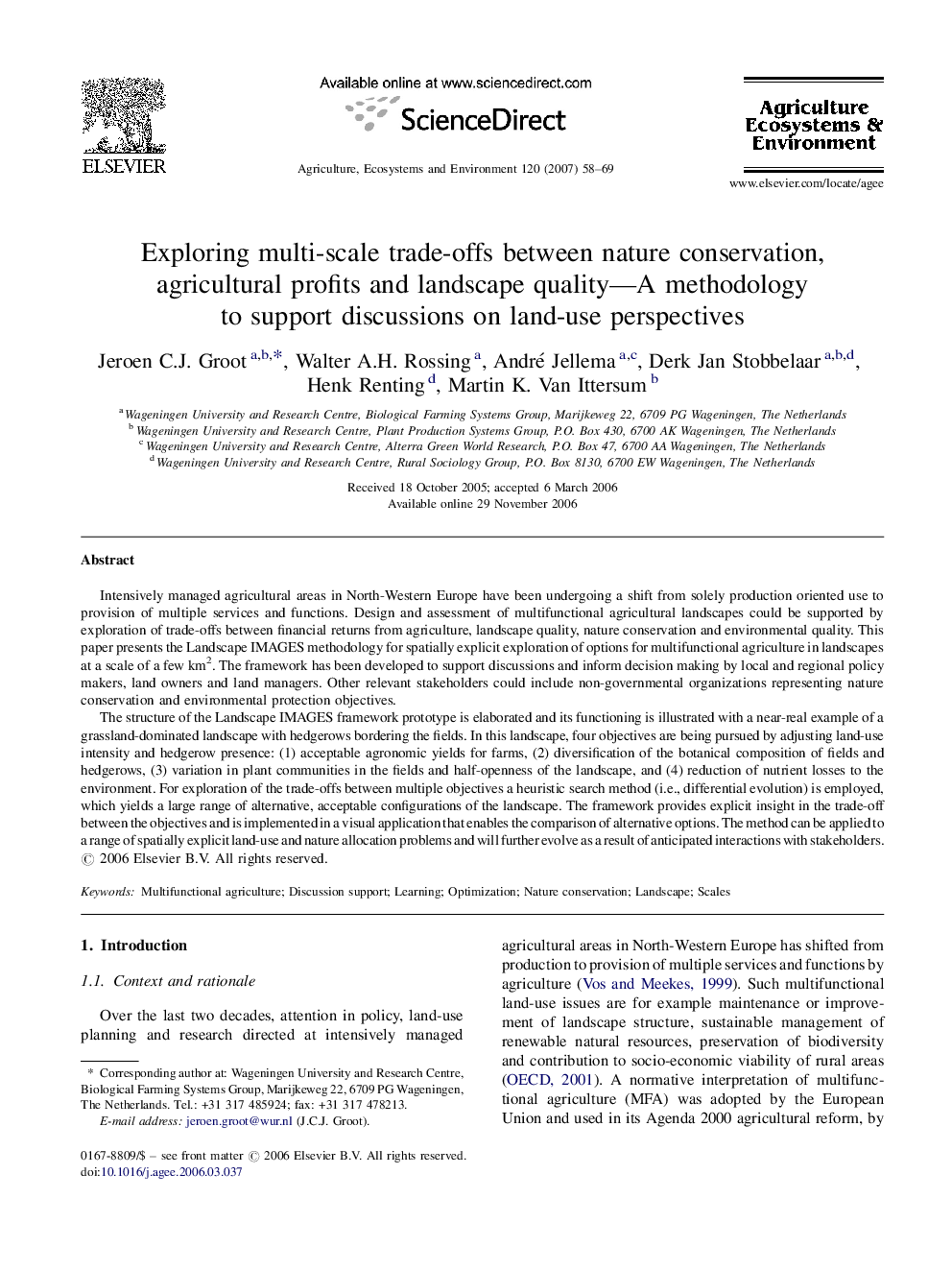| Article ID | Journal | Published Year | Pages | File Type |
|---|---|---|---|---|
| 2415831 | Agriculture, Ecosystems & Environment | 2007 | 12 Pages |
Intensively managed agricultural areas in North-Western Europe have been undergoing a shift from solely production oriented use to provision of multiple services and functions. Design and assessment of multifunctional agricultural landscapes could be supported by exploration of trade-offs between financial returns from agriculture, landscape quality, nature conservation and environmental quality. This paper presents the Landscape IMAGES methodology for spatially explicit exploration of options for multifunctional agriculture in landscapes at a scale of a few km2. The framework has been developed to support discussions and inform decision making by local and regional policy makers, land owners and land managers. Other relevant stakeholders could include non-governmental organizations representing nature conservation and environmental protection objectives.The structure of the Landscape IMAGES framework prototype is elaborated and its functioning is illustrated with a near-real example of a grassland-dominated landscape with hedgerows bordering the fields. In this landscape, four objectives are being pursued by adjusting land-use intensity and hedgerow presence: (1) acceptable agronomic yields for farms, (2) diversification of the botanical composition of fields and hedgerows, (3) variation in plant communities in the fields and half-openness of the landscape, and (4) reduction of nutrient losses to the environment. For exploration of the trade-offs between multiple objectives a heuristic search method (i.e., differential evolution) is employed, which yields a large range of alternative, acceptable configurations of the landscape. The framework provides explicit insight in the trade-off between the objectives and is implemented in a visual application that enables the comparison of alternative options. The method can be applied to a range of spatially explicit land-use and nature allocation problems and will further evolve as a result of anticipated interactions with stakeholders.
